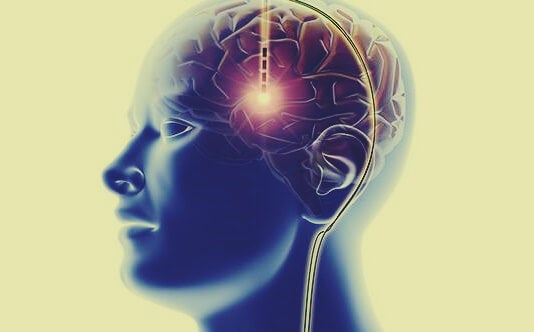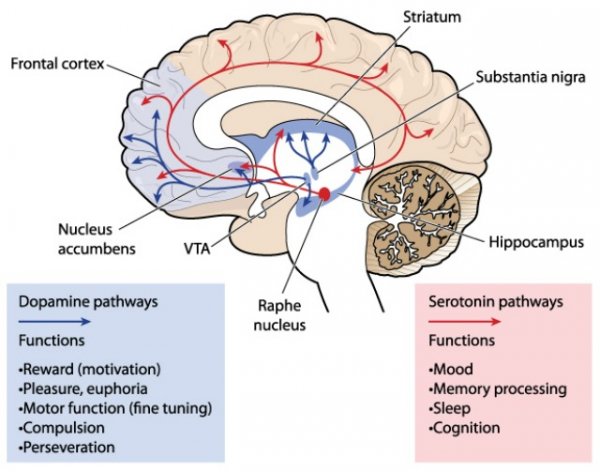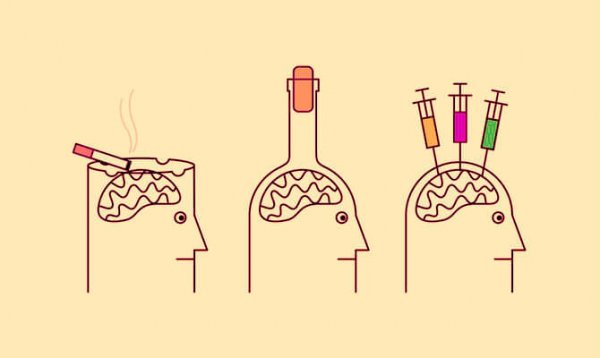The Fascinating World of Your Brain's Reward System


Written and verified by the psychologist Valeria Sabater
Many people think that the brain’s reward system is the part of the brain that causes addictions. However, there’s one essential aspect that we have to understand here. Having goals is synonymous with health and well-being. Thus, all of this neurobiology, which is behind the motivation and pleasure you find in your daily life, is regulated by this complex, yet fascinating, group of neural structures.
Eating, resting, drinking a cup of coffee with friends, waiting for a like on the photo you’ve just uploaded, eating a chocolate-filled dessert, going shopping, or going or to the cinema… These common daily situations are all governed by your brain’s reward system.
Often, when we talk about this neural structure, it’s common to hear that its most basic priority is to ensure our survival. All the processes carried out by primordial instinct are automatic. They’re governed, in most cases, by a very basic emotion: fear. This emotion makes you prudent and careful. It reminds you of the dangers in life and it tells you that it’s often best to stay safe in your comfort zone.
When our brain rewards us
But what about pleasure? What’s the purpose of all the positive things we mentioned above? Believe it or not, the motivation and well-being you find when you behave in a certain way is also part of your development. You’re often surrounded by many different stimuli and situations. You need to prioritize them and concentrate on the things that can work to your own benefit.
For example, your brain will reward you when, after a stressful day at work, you decide to meet up with a special friend to chill out with a drink. It’ll also give you a dose of dopamine when, in the middle of a hot morning, you go and get a glass of water to stay hydrated. The purpose of this neural structure, then, is to keep you motivated so you can carry out specific actions that it considers appropriate.

What’s the brain’s reward system?
When we talk about the brain’s reward system, we’re referring to a series of structures that the brain activates when it detects rewarding or reinforcing stimuli. For example, when we see a freshly made pizza, an ice cream cone, a book we were waiting for, or any other stimulus that fits our tastes and needs at that moment, the brain responds by releasing a very specific neurotransmitter: dopamine. Then, the brain triggers the motivation to achieve that goal.
In the 1950s, two neurologists discovered the existence of this mechanism. James Olds and Peter Milner discovered that, by stimulating certain brain areas, mammals experienced greater motivation to obtain something. That discovery was a revolution to the point that they thought that applying electrodes to different areas of the brain could change human behavior.
So much so that, in 1972, they conducted a very controversial experiment to modify the behavior of a young homosexual. The Journal of Behavioral Therapy and Experimental Psychiatry published the results.
As a result of all these experiments and tests, some more ethical than others, scientists were able to understand what structures were involved in the brain’s reward system:
Mesolimbic dopaminergic pathway
This is the main route through which dopamine is released and flows. It begins in the ventral tegmental area and connects to structures such as the nucleus accumbens, the amygdala, the hippocampus, and the prefrontal cortex. This structure deals with pleasure and rewarding experiences.

The ventral tegmental area
More than a structure, this is actually a group of neurons (dopaminergic cells) located in the middle of the brain. This area deals with processes and intense emotions such as love, learning, motivation, and orgasms. It also deals with addictive behavior.
Nucleus accumbens
This is another group of neurons which have to do with processes such as pleasure, laughter, motivation, fear, aggression, and addiction.
Cerebral cortex
The cerebral cortex is the outermost layer and the most sophisticated part of the brain. It’s where the brain regulates most of your executive functions or cognitive processes. This area also has a great deal to do with the reward system. However, we should remember that none of these structures work in isolation from each other. They’re all interconnected by a structure called motor limbic booster circuit.
This structure combines motivational and emotional areas with motor functions. These are the ones that encourage you to mobilize, and even plan, your behavior and actions. This is all thanks to the cerebral cortex.
The addictive processes
We pointed this out at the beginning. Whenever we talk about the brain’s reward system, many people relate it to addictive behavior. We now know that this system is involved in many more processes and behavior than the most common ones. Thus, it’s time to understand why there are people who develop different types of addictions.
We know that there are multiple factors: social, familial, and even psychological. However, it’s interesting to note that some studies reveal that there are certain genetic components capable of making some people more susceptible than others. This, in itself, is revealing, because, as researchers from the University of Maryland explained in their report on the subject, this means that the people will be able to receive treatment in many cases.
For example, we even know that certain alterations in the mesolimbic reward system can cause addictive behavior. However, beyond the triggers and causes, there’s one fact we can’t ignore: we know that the brain gratifies us or pushes us to achieve certain things that it considers to be positive.

Why do we persist with addictive behavior?
So, why does addictive behavior continue if it’s harmful? Well, what actually happens is that certain harmful substances, like any kind of drug, completely “alter” the reward system. They transform and alter it in such a way that it loses control. This can have an impact on practically any part of our brain. The person lives with only one thing in mind: to obtain that substance or to carry out the same actions in a compulsive way.
Our perception of reality changes completely, as does our behavior, personality, and, of course, our health. Therefore, understanding how the brain’s reward system works allows us to understand much more about who we are. It’s a mechanism that, ultimately, regulates how we view our behavior, both positive and negative.
All cited sources were thoroughly reviewed by our team to ensure their quality, reliability, currency, and validity. The bibliography of this article was considered reliable and of academic or scientific accuracy.
Cuatrocchi, E. (2009), La adicción a las drogas. Madrid: Espacio Editorial.
Gil Verona, José Antonio (2014) Fundamentos de Neurobiología. Madrid: Editorial Académica Española
This text is provided for informational purposes only and does not replace consultation with a professional. If in doubt, consult your specialist.








